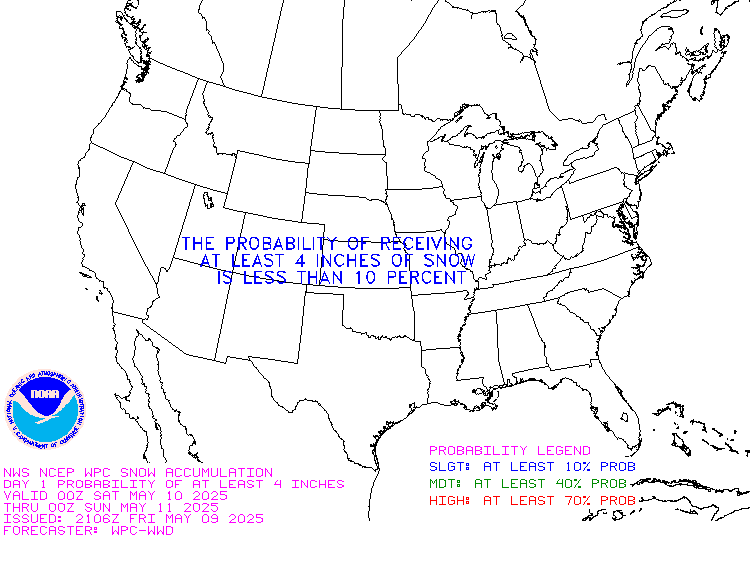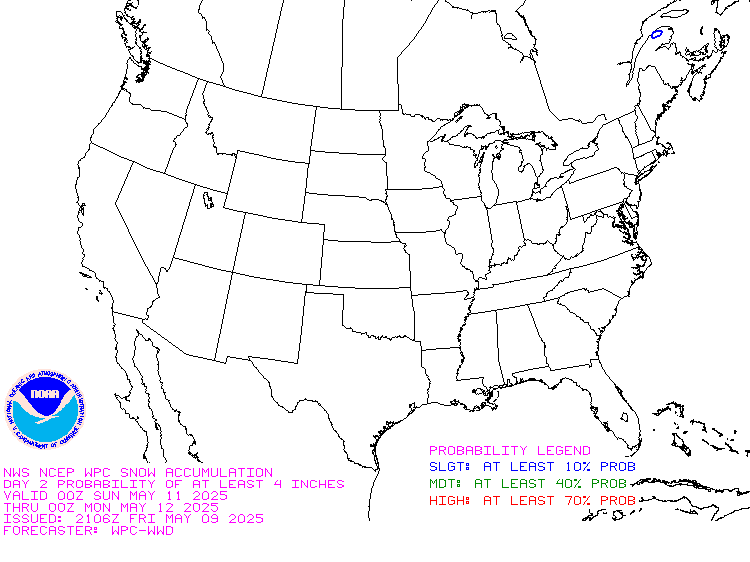It is difficult to find a more comprehensive Weather Outlook anywhere else with the ability to get a local 10-day Forecast also.
This article focuses on what we are paying attention to in the next 48 to 72 hours. The article also includes weather maps for longer-term U.S. outlooks and a six-day World weather outlook which can be very useful for travelers.
First the highlights from the NWS.
Short Range Forecast Discussion
NWS Weather Prediction Center College Park MD
Tue Feb 13 2024
Valid 12Z Tue Feb 13 2024 – 12Z Thu Feb 15 2024…Strong nor’easter to impact portions of the northern Mid-Atlantic and
southern New England today with areas of heavy snow, strong winds, and
coastal flooding……New storm system to arrive across the Northwest over the next couple of
days which will bring locally heavy rain and mountain snowfall…
Above is a 72 hour animation of the forecast.
Then, looking at the world and of course, the U.S. shows here also. Today we are looking at precipitation.
Please click on “Read More” below to access the full report issued today.
Notices: The article on the Seasonal Outlook can be accessed HERE. What would you like to learn about? Please provide that to me via the comment section at the end of the article.
Now more detail on the 48-Hour Forecast (It is a 48 to 72 Hour Forecast actually)
Daily weather maps. The Day 1 map updates twice a day and the Day 2 and 3 maps update only once a day. These maps update automatically. But if that does not happen, you can get updates by clicking HERE
TODAY (or late in the day the evening/overnight map will appear) (Key to surface fronts shown on maps and you will then also be able to insert a city name or zip code and get a local NWS forecast).
TOMORROW
NEXT DAY
This animation shows how things may play out over the next 60 hours. To update click here.
The NWS Climate Prediction Center’s: Watches, Warnings, and Advisories plus other information can be found HERE. We post at least one of those updates daily, sometimes both. The Highlights are shown in the lede paragraph of this article.
ATMOSPHERIC RIVERS
This tells us what is approaching the West Coast. Click HERE to update If I have not gotten around to doing the update. Here is some useful information about Atmospheric Rivers.
Continuation of the NWS Short Range Forecast. It is updated by NWS twice a day and these updates can be found here
A strong nor’easter will be rapidly pushing east and away from the
Mid-Atlantic coast this morning and well out to sea by later today. The
storm will continue to rapidly deepen and will promote areas of snow, or
rain changing to snow early this morning across south-central to eastern
Pennsylvania, central and northern New Jersey, and southern New England.
The axis of heaviest snowfall is expected from eastern Pennsylvania,
including the Lehigh Valley, through northern New Jersey, far southeast
New York, and southern New England. This will include the greater New York
City metropolitan area. Some areas especially over southern New England
are expected to see as much as 6 to 12 inches of snow, with lesser amounts
of 3 to 6 inches elsewhere, and this heavy snow is expected to produce
locally significant travel disruptions. Strong winds are expected on the
back side of the departing low center, and this coupled with the heavy,
wet snow may result in downed trees and power lines which will result in
concerns for power outages. Some coastal flooding will also be possible
today during high tide along the northern Mid-Atlantic and southern New
England coasts.Meanwhile, there will be a weak storm system crossing the central Plains,
Midwest, and Great Lakes region on Wednesday and Thursday. Despite the
relative lack of cold air for this system to work with, there will be a
swath of locally a few inches of snow, with some rain closer to the track
of the low pressure center.A new storm system will also be arriving in from the Pacific Ocean for
Wednesday and Thursday which will bring in a new surge of moisture and
areas of locally heavy precipitation. This will include heavy rainfall for
the coastal ranges of the Pacific Northwest and down into northern
California. Locally a couple inches of rain can be expected. Farther
inland over the higher terrain of the Cascades, Sierra Nevada, and
gradually the northern Rockies, this precipitation will fall as heavy
snow. As much as 1 to 2 feet of new snow with isolated heavier amounts can
be expected going through Thursday.The remainder of the country going through the middle of the week will be
rather dry and tranquil. Temperatures for large areas of the Midwest will
continue to be above normal, with temperatures somewhat below normal for
the Northeast and Intermountain West. There will be the beginning of a
surge of at least modified Arctic air from Canada by late Wednesday and
Thursday into the northern High Plains, and this will set the stage for
even colder temperatures anomalies arriving by the latter part of the week.Learn about wave patterns HERE.
Below is the current five-day cumulative forecast of precipitation (Updates can be found HERE)
Ski SnowReports
New Feature – Ski Reports. It is difficult to find reports that auto-update on-screen (and they are very long) but these links will get you to them – If you have additional suggestions make them in the comments section after every Econcurrents Article and we may add those links. We will try to not have too much overlap as that can add to the confusion.
Snow Forecasts. And remember this shows natural snow. Ski resorts also make their own snow.
Day 1
Day 2
Additional snow information can be found here, here, here, and here. The second link provides animations.
Now we look at Intermediate-Term “Outlook” maps for three time periods. Days 6 – 10, Days 8 – 14, and Weeks 3 and 4. An outlook differs from a forecast based on how NOAA uses these terms in that an “outlook” presents information as deviation from normal and the likelihood of these deviations.
Below are the links to obtain updates and additional information. They are particularly useful if you happen to be reading this article significantly later than when it was published. I always try to provide readers with the source of the information in my articles.
Days 6 – 10 (shown in Row 1) Days 8 – 14 (Shown in Row 2) Weeks 3 and 4 (Shown in Row 3 but updates only on Fridays) https://www.cpc.ncep.noaa. gov/products/predictions/610day/ https://www.cpc.ncep .noaa.gov/products/predictions/814day/ https://www.cpc.ncep.noaa.gov/products/predictions/WK34/ Showing the actual maps. They should now update automatically. The Week 3 – 4 Outlook only updates on Fridays. So below is what I call the Intermediate-term outlook. On Fridays, it extends out 28 Days. That declines day by day so on Thursday it only looks out 22 days until the next day when the Week 3 – 4 Outlook is updated and this extends the outlook by one additional week.
6– 10
8– 14
3– 4
HAZARDS OUTLOOKS
Click here for the latest complete Day 3 -7 Hazards forecast which updates only on weekdays. Once a week probably Monday or Tuesday I will update the images. I provided the link for readers to get daily updates on weekdays. Use your own judgment to decide if you need to update these images. I update almost all the images Friday Night for the weekend edition of this Weather Report. So normally readers do not need to update these images but if the weather is changing quickly you may want to.
Temperature month to date can be found at https://hprcc.unl.edu/products/maps/acis/MonthTDeptUS.png
Precipitation month to date can be found at https://hprcc.unl.edu/products/maps/acis /MonthPNormUS.png
World Forecast [that website is has been intermittant so be patient]
Below are the Day 1 -3 and 4-6 forecasts for temperature and precipitation. Updates and much additional information can be obtained HERE
World Temperature Anomalies
World Accumulated Precipitation
This information is provided by the University of Maine. They draw upon many different sources. There is a lot of information available at the link provided. I have just provided two useful forecasts. There are probably over a hundred different forecasts available from this source.
Worldwide Tropical Forecast (This is a NOAA Product)
This graphic updates on Tuesdays) If it has not been updated, you can get the update by clicking here Readers will only have to do that if they are reading this article much later than the date of it being published.
Information on Tropical Storms can be found HERE. Western Pacific information can be found HERE.
–
I hope you found this article interesting and useful. –


